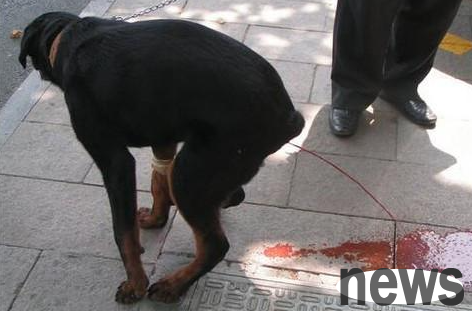If a puppy who has just been brought home, or a one-year-old dog who has insecurity and has rescued him, vomits and diarrhea, and has blood in the stool, is it really small? This question has always been the most consulting and guidance issue for the medical guide. Many pet owners are unsure of their minds. It will cost more money if they do not treat them carefully. If they do not treat them carefully, they are afraid that they will delay their condition and will be even more dangerous later and it will be too late. Therefore, many owners will hesitate even if they go to the hospital for examination.

The puppy has parvovirus. First of all, let’s talk about the clinical classification of parvo:
1. Enteritis type (typical symptoms): depression, no appetite, vomiting and diarrhea, severe dehydration, weight loss, high fever, diarrhea in severe cases is bloody, dark red, late failure, low temperature or incontinence.
2. Myocardial inflammation: It is more common in young dogs aged 28-42 days. They often have no obvious symptoms, or only show mild diarrhea, and then suddenly weaken, have difficulty breathing, fast and weak pulse, murmurs in the auscultation of the heart, pathological changes in the electrocardiogram, and die in a short period of time.
Any disease occurs from mild to severe, so it is very important to determine and diagnose in the early stages. This is also the most concerned issue for everyone!
So, what are the diseases that have similar symptoms to those of early minor minority?
1. Cold. 2. Eat too much. 3. Food poisoning. 4. Eat the food that people eat. 5. Drink water incompletely. 6. Canine distemper. 7. Enteritis. 8. Nutritional diarrhea. 9. Parasite. 10. Coronavirus.
How can we confirm whether the dog is really small?
1. Test version: There are two types of beta versions: domestic and imported. Some have higher sensitivity and some have lower sensitivity. Usually, when the C line is red and the T line is red, it can be judged to be small.
2. Further diagnosis: According to routine blood tests, if the white blood cells are less than 4,000, the diagnosis can be confirmed, but if they are less than 2,000, it is very dangerous.
3. Clinical treatment tracking: Comprehensive judgment based on clinical treatment situation is particularly important, which is very critical.

Guide tips:
1. Whether puppies or dogs under one year old who are under one year old with weak tests or symptoms are not obvious, timely treatment or symptomatic treatment is important. We remind everyone not to delay with luck.
2. If the symptoms are typical, you must cooperate with a doctor to provide comprehensive and systematic treatment, including infusion, injection of antiviral biological products, strengthening care, etc.
3. Usually the small treatment cycle is about one week, and a peak period may occur in 3-5 days. After it is passed, most of them will have a good prognosis and have little impact on future growth and development.
4. If there is low temperature, failure, coma, incontinence and other conditions in clinical practice, the possibility of cure is usually extremely low. Whether to continue treatment requires a comprehensive evaluation of the pet owner and doctor!